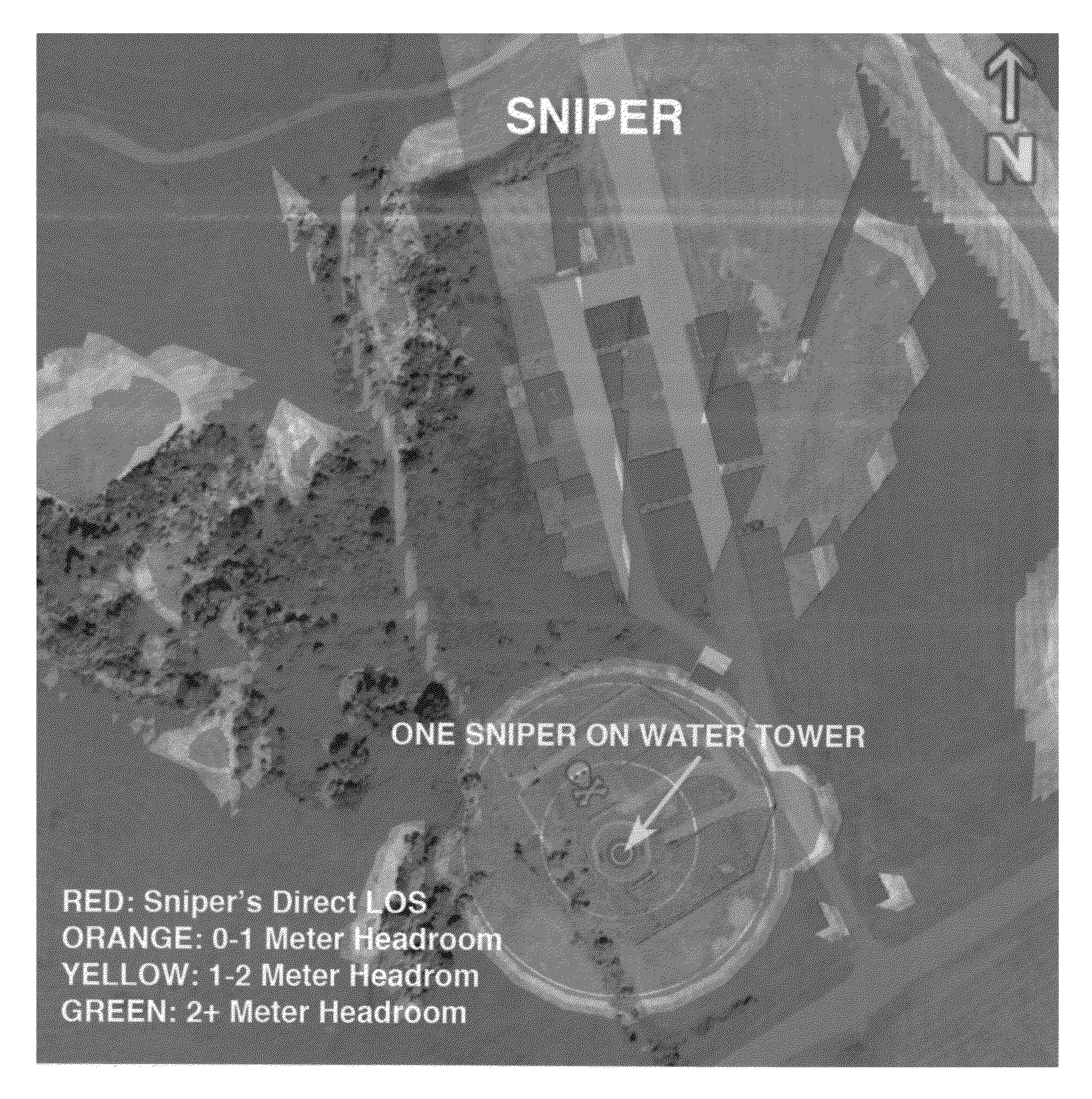Lines-of-sight and viewsheds determination system
a technology of viewsheds and determination systems, applied in the field of linesofsight and viewsheds determination systems, can solve the problems of old methods limited to a stationary sniper, target, or observer, and achieve the effect of reducing transparency
- Summary
- Abstract
- Description
- Claims
- Application Information
AI Technical Summary
Benefits of technology
Problems solved by technology
Method used
Image
Examples
Embodiment Construction
[0037]The present invention employs ray tracing, e.g. as described in U.S. Pat. No. 4,865,423, by Akio Doi, issued Sep. 12, 1989, and in Turner Whined, “An Improved Illumination Model for Shaded Display”, Communications of the ACM, Vol. 23, No. 6, pp. 343-49 (June 1980), both of which are incorporated herein by reference. Ray tracing is also described in Rob Cook and Ken Torrance, “A Reflectance Model for Computer Graphics”, ACM Transactions on Graphics, Vol. 1, No. 1 (January 1982), also incorporated herein by reference.
[0038]Ray tracing, shown in FIG. 1, starts with a ray L (Line of Sight, or “LOS”), emitted from a viewpoint 12, that is posited for each pixel (I,j) on screen 10 (matched with a plane of projection), and the surfaces of objects intersecting ray L are searched. Of objects 14 and 16, the first intersected by ray L and the first seen is object 14 whose intersecting surface is closer to the viewpoint.
[0039]Another description of ray tracing is found in US Patent Applica...
PUM
 Login to View More
Login to View More Abstract
Description
Claims
Application Information
 Login to View More
Login to View More - R&D
- Intellectual Property
- Life Sciences
- Materials
- Tech Scout
- Unparalleled Data Quality
- Higher Quality Content
- 60% Fewer Hallucinations
Browse by: Latest US Patents, China's latest patents, Technical Efficacy Thesaurus, Application Domain, Technology Topic, Popular Technical Reports.
© 2025 PatSnap. All rights reserved.Legal|Privacy policy|Modern Slavery Act Transparency Statement|Sitemap|About US| Contact US: help@patsnap.com



